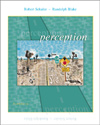This chapter was a journey through the realm of object recognition, the all-important ability to categorize what we see. This is the basis for using what we see, or reacting appropriately to it. Recognition has to overcome a number of challenges, including the challenges posed by objects whose parts are occluded, and objects that can be seen from a variety of different viewpoints. Among the ways that vision deals with these challenges is neural plasticity: with practice and experience, the nervous system adjusts its sensitivity to conform to the demands of visual inputs. The temporal pathway, and particularly its inferotemporal (IT) cortex, is a major contributor to object recognition. Along the way, two processes were introduced, imagery and memory, that play an important supporting role in object recognition. Theories of recognition were tested for their ability to account for important aspects of face and greeble recognition. A lot of our understanding of recognition comes from failures of recognition, resulting from brain damage (as in prosopagnosia) or from diminished visual input. Finally, we applied some basic information about vision and visual recognition to the challenges of reading printed text. This chapter and the previous ones intentionally ignored some very important aspects of vision - color, motion, and depth. Now it's time, in the next three chapters, to learn how we deal with a world of color, movement, and objects arranged at varying distances. |



 2002 McGraw-Hill Higher Education
2002 McGraw-Hill Higher Education